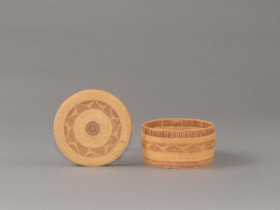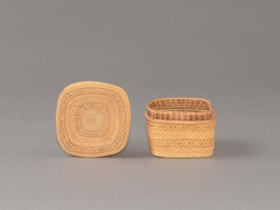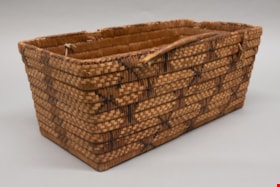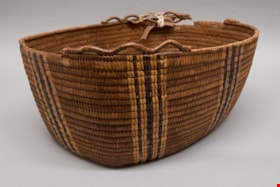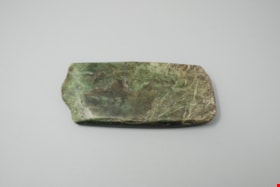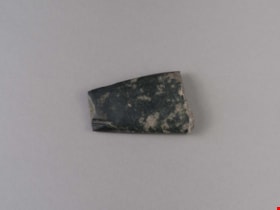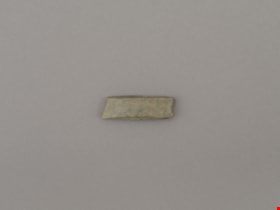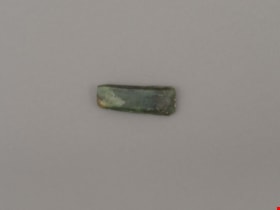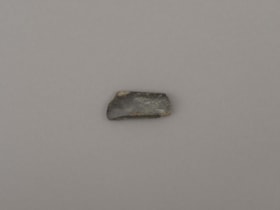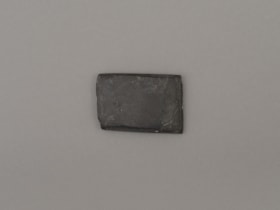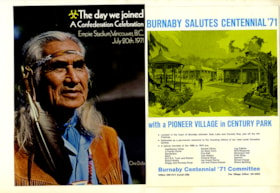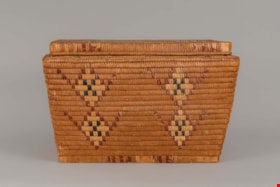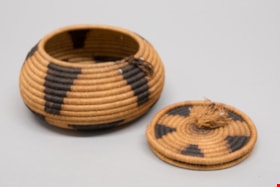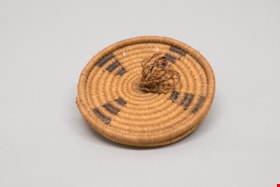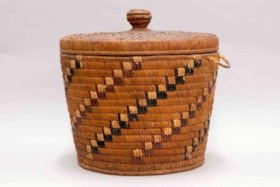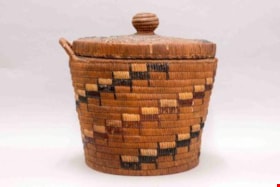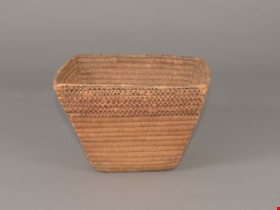More like 'Survey and Subdivision plans in New Westminster District Group 2 - Surrey, Delta '
Narrow Results By
Person / Organization
- Brown, Cice Chandler 2
- Burnaby Centennial '71 Committee 1
- Burnaby Mountain Centennial Park 1
- Burnaby Mountain Park 1
- Burnaby Village Museum 1
- Chow, Josephine 1
- Fowler, Rod 1
- George, Chief Daniel "Dan" 1
- Gill, Mohinder Kaur 1
- Gill, Prem Kaur 1
- Gill, Santokh "Gurmail" Singh 1
- Glenwood Elementary School 1
Interview with Josephine Chow by Denise Fong February 7, 2020
https://search.heritageburnaby.ca/link/museumdescription12337
- Repository
- Burnaby Village Museum
- Date
- [1900-2020] (interview content), interviewed Feb. 7, 2020
- Collection/Fonds
- Burnaby Village Museum fonds
- Description Level
- Item
- Physical Description
- 1 sound recording (mp3) (00:43:19 min.)
- Scope and Content
- Recording consists of an interview with Josephine Chow (nee Hong) conducted by BVM researcher Denise Fong at the Burnaby Village Museum. Josephine describes her family history and recollects her childhood experiences in 1950s and 60s while growing with her family on their "Hop On" farm in Burnaby. …
- Repository
- Burnaby Village Museum
- Collection/Fonds
- Burnaby Village Museum fonds
- Series
- Museum Oral Histories series
- Subseries
- Chinese Canadians in Burnaby subseries
- Description Level
- Item
- Physical Description
- 1 sound recording (mp3) (00:43:19 min.)
- Material Details
- Interviewer: Denise Fong Interviewee: Josephine Chow Location of Interview: Burnaby Village Museum Interview Date: February 7, 2020 Total Number of Tracks: 1 Total Length of all Tracks: 00:43:19
- Scope and Content
- Recording consists of an interview with Josephine Chow (nee Hong) conducted by BVM researcher Denise Fong at the Burnaby Village Museum. Josephine describes her family history and recollects her childhood experiences in 1950s and 60s while growing with her family on their "Hop On" farm in Burnaby. The farm is situated in the Big Bend area along Marine Drive and is still in operation today. 0:00-08:45 Josephine Chow provides some historical background on the history of “Hop On Farm” and her family in British Columbia. She tells of how her grandfather Gay Tim Hong and three partners pooled money together to purchase twelve acres on Marine Drive in 1951. Prior to this, most of them farmed on the ʷməθkʷəy̓əm (Musqueam) First Nation Reserve for 20-30 years. It all began when her great grandfather Sui Wing Hong, first came to Canada from China and slowly brought over her grandfather, father and other members of the family. Her grandfather, Gay Tim Hong went back and forth between Canada and China at least four times since he and her grandmother had four children including her father, who was born in 1931. Her father came to Canada at 10 years of age to live with his father. Josephine’s great grandfather came to Vancouver from Zhongshan county in Canton Province (also known as Guangdong). 8:46- 14:20 Josephine provides the names of her siblings from the eldest to the youngest; Pauline, Josephine (herself), Catherine, Noreen, Gary, Darlene and Marlene. She describes what life was like on the farm with her parents working from sunrise to sunset. The family farmed vegetable produce taking orders from local stores in the lower mainland. Often the children helped their parents with the orders starting at eight or nine years of age. Other workers on the farm travelled by bus from Vancouver’s Chinatown. She also tells of how her father was an animal lover and raised chickens, pigeons, geese, koy, goldfish and dogs. 14: 21 – 16:56 Josephine describes what Burnaby was like during the time that she grew up in the late 1950s. She explains that Burnaby was very quiet with nothing being open on Sundays. On the farm, she and her siblings would entertain themselves by playing games like soccer, baseball and kick ball or also by catching frogs, snails, caterpillars and ladybugs. There were neighbours living on Marine Drive and almost every house had someone who we went to the same elementary school. The neighbourhood children would often come to play with them on their farm. 16:56- 26:47 Josephine describes how when they were young there were farms all around them and how on Sunday drives with her father, they would go to feed horses or look at the cows. Josephine shares that her elder sister Pauline was the only one born in China and how when she first arrived that she lived on the ʷməθkʷəy̓əm (Musqueam) First Nations Reserve with their parents before they moved to Burnaby. Josephine recollects that most of her friends were farmer’s kids from the neighbourhood but while in school, she had more Caucasian friends. Josephine and her siblings attended Glenwood Elementary on Marine Drive and later Junior Secondary at McPherson Park (grades 8-10) and Burnaby South Senior Secondary (grades 11-12. ). She shares some of her experiences while attending school. She said that there were about a dozen Asians in school with her, mostly from farming families in the “Flats”. 26:48- 30:45 Josephine describes what life was like for her and her siblings after school. They often helped on the farm when they got home, usually taking care of orders for green onions. Her mother made dinner and did all of the cooking for family and workers on the farm as well as working in the fields. Her father did all of the grocery shopping in Vancouver’s Chinatown two or three times per week where he purchased meat and fish. She says that her grandfather, often travelled by bus every Saturday or Sunday to meet up with friends in Chinatown. Extracurricular activities for her and her siblings included volley ball and soccer as long as it didn’t interfere with their work schedule on the farm. 30:46- 37:03 Josephine describes what occurred while living at home, the food they ate, shopping and attending Chinese school. Her mother cooked only Chinese food, she didn’t know how to cook “Western food”. For school lunches, the kids made their own sandwiches. She tells of a Chinese language school arranged by Mrs. Joe [sic] who lived on Gilley Road and was Canadian born Chinese. Mrs. Joe [sic] also arranged an English class for farmer’s wives on Tuesday nights in which her mother attended. Josephine recollects learning Mandarin from Mrs. Joe [sic] a few days a week after her regular school. Chinese school took place at Riverway School on Meadow Avenue in Burnaby. Mrs. Joe also taught them a lot about Chinese culture including Kung Fu, Chinese Dance and Chinese brush painting. 37:04- 39:39 Josephine describes Medical Care for her and her family in the 1950s and 1960s. She tells of a female Chinese doctor in Vancouver, Dr. Madeline Chung. Dr. Chung was responsible for delivering a lot of Chinese babies including Josephine. The family also visited herbalists in Vancouver Chinatown. They would often buy herbs for colds etc. Josephine also tells of how her parents stayed in touch with family in China by writing letters. Her mother’s family, including her parents and siblings were still in China while most of her father’s family were here in Canada. 39:40- 43:19 – In closing, Josephine shares how life is much busier now and of how she misses the quietness of her days growing up. She briefly describes her life on the family farm now and how different it is from when her parents worked the farm. She explains how farming methods have changed and how they don’t have to work as hard as her parents did.
- History
- Interviewee biography: Josephine Chow (nee Hong) is the second eldest child of Chan Kow Hong and Sui Ha Hong. In 1925, Josephine's grandfather, Gay Tim Hong immigrated to Canada from Zhongshan county in Canton Province (also known as Guangdong). In 1952, her father, Chan Kow Hong joined his father, Gay Tim Hong and by 1953, he established "Hop On Farms" in the Big Bend area of Burnaby near Marine Drive. Josephine grew up on the farm with her parents and six siblings; Pauline, Catherine, Norine, Gary, Darlene and Marlene. In 1969, Josephine's elder sister Pauline and her husband Jack Chan took over the family farm and in 1972 their father and grandfather moved to Kamloops to open a restaurant. As an adult, Josephine worked in several different areas including owning and running her own Aesthetics business. Josephine eventually retired and returned to the farm to assist her siblings. The farm is still in operation. Interviewer biography: Denise Fong is a historical researcher at Burnaby Village Museum. She has degrees in Anthropology (BA) and Archaeology (MA), and is completing her doctoral degree at UBC in Interdisciplinary Studies. Her primary research interests are in Chinese Canadian history and critical heritage studies. She is the co-curator of BVM’s “Across the Pacific” exhibition, and the Museum of Vancouver’s “A Seat at the Table – Chinese Immigration and British Columbia”.
- Creator
- Burnaby Village Museum
- Subjects
- Persons - Chinese Canadians
- Agriculture - Farms
- Education
- Buildings - Schools
- First Nations reserves - British Columbia
- Names
- Chow, Josephine
- Glenwood Elementary School
- McPherson Park Junior Secondary School
- ʷməθkʷəy̓əm (Musqueam)
- Responsibility
- Fong, Denise
- Geographic Access
- Byrne Road
- Accession Code
- BV020.6.1
- Access Restriction
- No restrictions
- Reproduction Restriction
- No known restrictions
- Date
- [1900-2020] (interview content), interviewed Feb. 7, 2020
- Media Type
- Sound Recording
- Historic Neighbourhood
- Fraser Arm (Historic Neighbourhood)
- Planning Study Area
- Big Bend Area
- Related Material
- See also BV017.36*
- Scan Resolution
- 600
- Scan Date
- 12/3/2017
- Scale
- 100
- Notes
- Title based on contents of interview
- Photograph info: Gary Hong and Chan Kow Hong harvesting celery at Hop-On Farms [1969]. BV017.36.4
Images
Audio Tracks
Interview with Josephine Chow by Denise Fong February 7, 2020, [1900-2020] (interview content), interviewed Feb. 7, 2020
Interview with Josephine Chow by Denise Fong February 7, 2020, [1900-2020] (interview content), interviewed Feb. 7, 2020
https://search.heritageburnaby.ca/media/hpo/_Data/_BVM_Sound_Recordings/Oral_Histories/2020_0006_0001_001.mp3basket
https://search.heritageburnaby.ca/link/museumartifact84019
- Repository
- Burnaby Village Museum
- Accession Code
- BV014.9.1
- Description
- This basket is woven using the wrapped twining method and is made of swamp grass. The designs were made using aniline dyes and are badly faded; original colours still visible on the inside of lid and basket. The weave on this basket is very finely done. The basket and lid are decorated with bird motifs. Originally birds were yellow on a purple background. The lid has a drop edge that fits over a lip around the top edge of the basket. It is decorated in concentric circles with a dark spot in the centre. The spot includes black as well as the wine colour. The outside is faded to a light brown colour. Nuu-chah-nulth
- Object History
- The basket was acquired in Victoria in the 1930s before the family moved to Vancouver.
- Country Made
- Canada
- Province Made
- British Columbia
- Culture
- Nuu-Chah-Nulth
Images
Documents
basket
https://search.heritageburnaby.ca/link/museumartifact84020
- Repository
- Burnaby Village Museum
- Accession Code
- BV014.9.2
- Description
- Basket with red cedar bark base and warps and swamp grass wefts. The base is done in checker weave, while the walls and lid are done using wrapped twining. The base of the basket is secured with two strand twining and then the warps were split and smaller rows of two strand twining follow. The edge of the base is distinguished by one row of three strand twining, which creates a noticeable break in the pattern, before the wrapped twining begins for the walls. Designs, consisting of horizontal stripes, were made using analine dyes, which are extremely light sensitive. Colours are preserved on inside of basket, where light exposure has been much lower. Originally red and black stripes. Nuu-chah-nulth
- Object History
- The basket was acquired in Victoria in the 1930s before the family moved to Vancouver.
- Country Made
- Canada
- Province Made
- British Columbia
- Culture
- Nuu-Chah-Nulth
Images
Documents
carrying basket
https://search.heritageburnaby.ca/link/museumartifact80210
- Repository
- Burnaby Village Museum
- Accession Code
- BV009.1.1
- Description
- Rectangular coiled cedar root basket with cedar slat foundation and walls that flare slightly towards rim. Decorated in beaded designs of cattail grass and black dyed cherry bark. Darker elements arranged in a butterfly design. Butterflies are said to represent everlasting life by Stó:lō and Nlaka’pamux basket makers. Overcast handles sewn to basket with leather ties. One has been repaired with string. Finished with a braided rim. Triangular shaped stitches attach base to walls of basket. Interior Salish: Stl’atl’imx?
- Object History
- Basket, ca. 1895-1910, from the collection of the L. Claude Hill family, who owned the property that became the Burnaby Village Museum. According to the Hill family, L. Claude's wife Anne Sarah Hill (nee Kendrick) traded blankets for baskets, although it is not known if this particular basket was obtained in this manner. Indigenous people travelled the trail that crossed Deer Lake Brook (Douglas Road / Canada Way).
- Measurements
- Measurements: width 24 cm and length 44 cm and depth 18 cm. All measured from top edge to outside.
- Country Made
- Canada
- Province Made
- British Columbia
- School/Style
- Coast Salish
- Culture
- Stl’atl’imx
Images
Documents
work basket
https://search.heritageburnaby.ca/link/museumartifact80211
- Repository
- Burnaby Village Museum
- Accession Code
- BV009.1.2
- Description
- Oval shaped coiled cedar root basket with cedar slat foundation. Overcast rim with remnants of a loopwork border. Decorated with vertical stripes of imbricated designs in canary grass and black dyed cherry bark. Cherry bark can be distinguished by the small eyes in the surface of the bark. If the basket maker is skilled the bark has a shiny appearance, if it has not been scraped properly it has a greyish tinge. Canary grass is differentiated from cattail and bear grass by its shiny appearance according to a Stó:lō/Stl’atl’imx elder and basket maker from Mount Currie, who was married into Upper Sḵwx̱wú7mesh.
- Object History
- Basket, ca. 1895-1910, from the collection of the L. Claude Hill family, who owned the property that became the Burnaby Village Museum. According to the Hill family, L. Claude's wife Anne Sarah Hill (nee Kendrick) traded blankets for baskets, although it is not known if this particular basket was obtained in this manner. Indigenous people travelled the trail that crossed Deer Lake Brook (Douglas Road / Canada Way).
- Measurements
- Measurements: width 31.5 cm and length 51.5 cm and depth 19.5 cm all measured from top edge to outside of basket, not including trim.
- Country Made
- Canada
- Province Made
- British Columbia
- School/Style
- Coast Salish
- Culture
- First Nations
Images
Documents
adze blade
https://search.heritageburnaby.ca/link/museumartifact44868
- Repository
- Burnaby Village Museum
- Accession Code
- BV002.57.19
- Description
- Nephrite adze blade; chipped on one end; rectangular shaped.
- Object History
- The donor inherited this artifact from his mother, Katherine Maude (Kitty) Peers, who inherited them from her father, Louis Claude Hill. The artifacts were found on his farm, Brookfield Farm, at Douglas Road and Sperling Avenue (now site of Burnaby Village Museum).
- Nephrite is found in the Fraser Canyon
- Culture Phase: Possibly Locarno Beach phase (3520-2200 Before Present) or Marpole (400BC - 400AD)
- Historic Neighbourhood
- Burnaby Lake (Historic Neighbourhood)
Images
Documents
adze blade
https://search.heritageburnaby.ca/link/museumartifact44870
- Repository
- Burnaby Village Museum
- Accession Code
- BV002.57.21
- Description
- Chisel, adze or axe blade made of serpentine; black; ends broken off; tapered rectangle shape.
- Object History
- The donor inherited this artifact from his mother, Katherine Maude (Kitty) Peers, who inherited them from her father, Louis Claude Hill. The artifacts were found on his farm, Brookfield Farm, at Douglas Road and Sperling Avenue (now site of Burnaby Village Museum).
- Culture Phase: Locarno Beach (3520-2200 Before Present) or Marpole (400BC - 400AD)
- Historic Neighbourhood
- Burnaby Lake (Historic Neighbourhood)
Images
Documents
adze blade
https://search.heritageburnaby.ca/link/museumartifact44872
- Repository
- Burnaby Village Museum
- Accession Code
- BV002.57.23
- Description
- Chisel, adze or axe blade made of serpentine; small
- Object History
- The donor inherited this artifact from his mother, Katherine Maude (Kitty) Peers, who inherited them from her father, Louis Claude Hill. The artifacts were found on his farm, Brookfield Farm, at Douglas Road and Sperling Avenue (now site of Burnaby Village Museum).
- Culture Phase: Locarno Beach (3520-2200 Before Present) or Marpole (400BC - 400AD)
- Historic Neighbourhood
- Burnaby Lake (Historic Neighbourhood)
Images
Documents
adze blade
https://search.heritageburnaby.ca/link/museumartifact44873
- Repository
- Burnaby Village Museum
- Accession Code
- BV002.57.24
- Description
- Nephrite adze blade; small
- Object History
- The donor inherited this artifact from his mother, Katherine Maude (Kitty) Peers, who inherited them from her father, Louis Claude Hill. The artifacts were found on his farm, Brookfield Farm, at Douglas Road and Sperling Avenue (now site of Burnaby Village Museum).
- Nephrite is found in the Fraser Canyon
- Culture Phase: Locarno Beach (3520-2200 Before Present) or Marpole (400BC - 400AD)
- Historic Neighbourhood
- Burnaby Lake (Historic Neighbourhood)
Images
Documents
adze blade
https://search.heritageburnaby.ca/link/museumartifact44874
- Repository
- Burnaby Village Museum
- Accession Code
- BV002.57.25
- Description
- Adze blade; small; possibly nephrite.
- Object History
- The donor inherited this artifact from his mother, Katherine Maude (Kitty) Peers, who inherited them from her father, Louis Claude Hill. The artifacts were found on his farm, Brookfield Farm, at Douglas Road and Sperling Avenue (now site of Burnaby Village Museum).
- Nephrite is found in the Fraser Canyon
- Culture Phase: Locarno Beach (3520-2200 Before Present) or Marpole (400BC - 400AD)
- Historic Neighbourhood
- Burnaby Lake (Historic Neighbourhood)
Images
Documents
adze blade
https://search.heritageburnaby.ca/link/museumartifact44876
- Repository
- Burnaby Village Museum
- Accession Code
- BV002.57.27
- Description
- Nephrite adze blade; rectangular; chipped on one side; slightly grooved on longer edges.
- Object History
- The donor inherited this artifact from his mother, Katherine Maude (Kitty) Peers, who inherited them from her father, Louis Claude Hill. The artifacts were found on his farm, Brookfield Farm, at Douglas Road and Sperling Avenue (now site of Burnaby Village Museum).
- Nephrite is found in the Fraser Canyon
- Marpole Culture (400BC - 400AD) or Gulf of Georgia Culture (400 AD – 1800); essentially these archaeological materials date to the last 2400 years.
- Historic Neighbourhood
- Burnaby Lake (Historic Neighbourhood)
Images
Documents
Album page
https://search.heritageburnaby.ca/link/museumartifact90706
- Repository
- Burnaby Village Museum
- Accession Code
- BV005.54.745
- Description
- Album page with two advertisement pages; col.; glossy; (may be from a program); page on the left includes a photograph of Chief Dan George with text reading: "The day we joined / A Confederation Celebration / Empire Stadium Vancouver, B.C. / July 20th. 1971"; page on the right reads: "Burnaby Salutes Centennial '71 / with Pioneer Village in Century Park / ... Burnaby Centennial '71 Committee"; recto. of eage page includes a printed advertisement
- Object History
- Album page 217 from Don Copan album/scrapbook for Burnaby Centennial '71 celebrations
- Don Copan was an active member of the Burnaby Centennial ’71 Committee and later became the founding President of the Century Park Museum Association. While a member of the Burnaby Centennial ’71 Committee, Don created a scrapbook album of photographs and ephemera documenting the Burnaby Centennial ’71 Committee’s involvement in celebrating British Columbia’s Centenary of Confederation between January and December 1971 including Burnaby’s Commemorative Project – Heritage Village (Burnaby Village Museum).
- Reference
- Photographs from the Don Copan scrapbook/album are described as part of the Donald Copan collection - Copan Album series
- Category
- 08. Communication Artifacts
- Classification
- Advertising Media
- Object Term
- Advertisement
Images
Documents
basket
https://search.heritageburnaby.ca/link/museumartifact17681
- Repository
- Burnaby Village Museum
- Accession Code
- HV978.2.13
- Description
- Nut-shaped, coiled cedar root basket with cedar root foundation and watch-spring base and lid construction. Hinged lid is attached with leather ties. Covered in beading, where in the decorative elements are laid flat on surface, rather than folded into cedar root stitches as is done with imbrication. Designs are in red and black dyed cherry bark. Interior Salish: Nlaka’pamux
- Object History
- Nut-shaped baskets are identified as one of the oldest types by Haeberlin and Teit (1928: 202-3). They were used for storing berries and were also common work baskets for women, used to hold small tools – awls, thread, shells, trinkets and other odds and ends (202).
- Country Made
- Canada
- Province Made
- British Columbia
- Culture
- Nlaka'pamux
Images
Documents
basket
https://search.heritageburnaby.ca/link/museumartifact27529
- Repository
- Burnaby Village Museum
- Accession Code
- HV974.119.3
- Description
- Rectangular coiled cedar root basket with cedar slat foundation, lid has parallel slat construction and is covered with beaded designs edged by imbrication in canary grass. Basket has a flat lid that is hinged to body with leather ties. A mistake was made in how the design was applied to one end of this basket. This is not common as many weavers would correct this mistake. Completely imbricated walls, beaded design on lid. Coast Salish: Sḵwx̱wú7mesh?
- Object History
- The donor reported that the baskets were traded in the early 1920s for clothes by the donor's mother, who lived in North Vancouver. Her mother told her the "Capilano Indians" used to go door to door with their baskets in North Vancouver.
- Diamonds are considered a star pattern and are common to Sḵwx̱wú7mesh and Nlaka’pamux basketry. The main design resembles a ladder or fence and is uncommon.
- Country Made
- Canada
- Province Made
- British Columbia
- Culture
- Sḵwx̱wú7mesh
Images
Documents
basket
https://search.heritageburnaby.ca/link/museumartifact30051
- Repository
- Burnaby Village Museum
- Accession Code
- HV973.79.1
- Description
- Rectangular coiled cedar root basket with cedar slat foundation. Parallel slat base and lid. Walls of basket flare slightly towards the rim. Basket has a conoid lid – one that fits over top of a flange on the rim of the basket. Rim is inset. Sets of triangular shaped stitches attach base to walls. Base of basket is protected by a foot, one slat high. Grass used for imbricated designs has a flat appearance typical of cattail grass. Black dyed and red cherry bark used for other design elements. Handles missing.
- Object History
- Design variant is uncommon. This may be a zoomorphic design possibly representing an animal head or flying bird.
- Country Made
- Canada
- Province Made
- British Columbia
- School/Style
- Coast Salish
Images
Documents
basket
https://search.heritageburnaby.ca/link/museumartifact50308
- Repository
- Burnaby Village Museum
- Accession Code
- BV006.24.5
- Description
- The basket is round with a lid and has a geometric design in black. Made using the coiled method.
- Object History
- Resembles California and Southwestern style baskets made of willow, dye and grass.
- Country Made
- United States of America
- Province Made
- California
Images
Documents
basket lid
https://search.heritageburnaby.ca/link/museumartifact50309
- Repository
- Burnaby Village Museum
- Accession Code
- BV006.24.6
- Description
- The basket is round with a lid and has a geometric design in black. Made using the coiled method.
- Object History
- Resembles California and Southwestern style baskets made of willow, dye and grass.
Images
Documents
basket with lid
https://search.heritageburnaby.ca/link/museumartifact87630
- Repository
- Burnaby Village Museum
- Accession Code
- BV017.11.3
- Description
- basket with lid; First Nations basket with lid; The basket is round, with two handles opposite each other. The handles are wrapped twine. The wrapping is missing from one handle. The lid has a knob handle in the centre. Basket and lid are decorated with a dark and light spiraling pattern. Had been used for storing knitting.
- Object History
- The basket was acquired by the donor's grandparents, Matilda and Robert William Handel, when they were living in North Vancouver. They were made by one of the local First Nations weavers, name unknown.
- Measurements
- Approx. H: 32 cm Dia.: 34 cm
- Culture
- ʷməθkʷəy̓əm (Musqueam)
Images
Documents
basket with lid
https://search.heritageburnaby.ca/link/museumartifact87633
- Repository
- Burnaby Village Museum
- Accession Code
- BV017.11.4
- Description
- basket with lid; First Nations basket with lid; The basket is round, with a single handle (opposite handle is missing). The lid has a knob handle in the centre. Basket and lid are decorated with a dark and light spiraling pattern. Had been used for storing knitting.
- Object History
- The basket was acquired by the donor's grandparents, Matilda and Robert William Handel, when they were living in North Vancouver. They were made by one of the local First Nations weavers, name unknown.
- Measurements
- Approx. H: 37 cm Dia.: 36 cm
- Culture
- ʷməθkʷəy̓əm (Musqueam)
Images
Documents
berry basket
https://search.heritageburnaby.ca/link/museumartifact27527
- Repository
- Burnaby Village Museum
- Accession Code
- HV974.119.1
- Description
- Trapezoidal shaped, coiled cedar root basket with cedar slat foundation. Finished with an overcast rim with root foundation. Design elements missing from one side of the basket, which is uncommon but has been seen on cradles from the Mount Currie area (Interior Salish: Lil'wat). It was perhaps the side that rests on the wearer's back. Steeply angled sides.
- Coast Salish: Sḵwx̱wú7mesh? Interior Salish: Stl’atl’imx: Lil’wat?
- Object History
- The donor reported that the baskets were traded in the early 1920s for clothes by the donor's mother, who lived in North Vancouver. Her mother told her the "Capilano Indians" used to go door to door with their baskets in North Vancouver.
- Design elements missing from one side of the basket – possibly the side that would have rested against the owner’s back.
- Steeply angled sides keep berries from crushing those at bottom of basket. Work baskets have sides that are more rounded.
- Baskets like these were used with a woven tumpline (wool strap) that was worn against the forehead, while basket was carried on back.
- Country Made
- Canada
- Province Made
- British Columbia
- Culture
- Stl’atl’imx
![Interview with Josephine Chow by Denise Fong February 7, 2020, [1900-2020] (interview content), interviewed Feb. 7, 2020 thumbnail](/media/hpo/_Data/_BVM_Images/2017/2017_0036_0004_001.jpg?width=280)
